John Singer Sargent was a remarkable and prolific artist, having created over 900 oil paintings and 2,000 watercolor paintings (many of which you can see on Sargent’s gallery page). You will notice that I use his work to illustrate many of the posts on Draw Paint Academy.
In this post, I take a closer look at his work to see exactly what made him such a remarkable artist and what you can apply to your paintings. I cover:
- Accurate and Distinct Values
- Remarkable Edge Work
- Painterly Brushwork
- Skilled Drawing
- Diverse Subject Selection
- Fresh and Spontaneous Watercolors
- Key Takeaways
- Want to Learn More?
- Thanks for Reading!

Accurate and Distinct Values
“Color is an inborn gift, but appreciation of value is merely training of the eye, which everyone ought to be able to acquire.” John Singer Sargent
Sargent’s accurate use of value is one of the main reasons why his paintings appear so realistic, even with the painterly brushwork he often displayed. When your values are on point, it gives you the freedom to be more relaxed in other areas of the painting.
He was also very economical with his values. Instead of painting every value he saw, he grouped similar areas and simplified the value structure. The unfinished painting below clearly shows his value groupings, particularly in the planes of the face:

Below is another great example of strong value groupings. Notice how the lights are distinct from the darks. It is easy to identify whether any particular area in the painting is in light or shadow. Many artists get so caught up in the rendering of a subject that they lose the important distinction between light and dark.

Here is the painting in grayscale to give you a clearer idea of the value groupings. In particular, notice how the boat and water are around the same dark value; without color, they form one solid shape. The same goes for the sail and buildings in shadow. These value groupings help simplify the value structure and convey a more powerful and concise image.

When working in oils, Sargent often started with the middle-values, then worked into the darks, and finally into the lights. In his own words:
“If you begin with the middle-tone and work up from it toward the darks so that you deal last with your highest lights and darkest darks, you avoid false accents.” John Singer Sargent
I know many oil painters like to start with the darkest dark then move up from there in value, but, as Sargent said, you are at the risk of false accents (going too dark). So you may want to consider adopting a similar strategy and working on your middle-tones first.
Remarkable Edge Work
Sargent transitioned between hard, soft, and lost edges to help convey realism and to direct attention to important areas.
Hard edges tend to command attention and are typically used for focal points, whilst soft and lost edges appear more ambiguous and are useful for background or less important areas in a painting.
His A Parisian Beggar Girl is a masterclass in edge work. The hardest edge in the painting appears to be around the subject’s left hand marking the end of her white garment. This hard edge, along with the burst of red around her forearm, draws attention to the beggar’s extended hand.

Below is a close-up of her extended hand to give you a better idea of the edge work:

Her face, on the other hand, is painted with mostly soft edges, leaving her slightly obscured and ambiguous. The edges are just strong enough to get a sense of that dormant look on her face. This suggests her begging hand is more important than her identity.

Sargent’s Smoke of Ambergris is a subtle painting, with white architecture and a woman standing over the smoke ornament. Hard edges draw your attention towards the woman and the ornament on the floor. The white architecture in the background features hard, soft, and lost edges as the light hits the different planes.

Sargent’s use of different edges in Venice in the Fog helps create a sense of depth and atmosphere. Hard edges and strong contrast give a feel of activity and closeness in the foreground. The background, by comparison, appears soft and distant. The horizon line is basically a lost edge, represented by a subtle transition in color.

Painterly Brushwork
One of my favorite aspects of Sargent’s work is the way he combined academic painting with painterly brushwork. He painted with confident strokes and a loaded brush. As he once said, “The thicker you paint, the more it flows”.
His painterly brushwork suggests that he painted quickly and spontaneously, but from what I have read, he was very careful and deliberate in his approach.
The painting below features two fishermen along the river. It is an interesting composition, with only the legs shown for one of the men. Sargent appears to have used thick paint and long strokes which follow the ripples in the water and the contours of the two men. Also, notice how the two men almost blend in with the surrounding nature.

Claude Monet is featured in the painting below. Sargent and Monet were known to paint together from time to time. That may explain the impressionist feel to some of Sargent’s landscape work. The brushwork is loose and the detail is simplified. It almost appears like a sketch compared to some of Sargent’s more refined work. However, the fundamentals of the painting are strong (the general shapes, colors, and structure).

In the painting below, Sargent took a very painterly approach for depicting the light hitting the rough terrain. Notice how he scumbled light colors across the dark foundation and used thick, blue paint to depict the sky peering through gaps in the trees.

Sargent used similar techniques in A Garden in Corfu:

Skilled Drawing
“You can’t do sketches enough. Sketch everything and keep your curiosity fresh.” John Singer Sargent
Drawing formed the foundation of Sargent’s artistic career. It allowed him to paint with a high level of realism and tackle remarkably complex subjects.
The thing about drawing is that it will usually show through in the finished painting. You cannot fix bad drawing simply by introducing color. If anything, color will only make things worse! That is why most of the top artists are such strong advocates for learning how to draw first if you want to become a great painter.
Sargent was always sketching, either in preparation for more serious works, or simply to keep his “curiosity fresh”. Below are some of his sketches I was able to locate. Take note of the clarity and economy of his lines.



The two sophisticated paintings below demonstrate his academic training and skills in drawing:


Diverse Subject Selection
Sargent is mostly known for his meticulous portraits, but he certainly did not limit himself to that subject. He painted everything from somber still lifes, intricate interior scenes, rigid architecture, to sweeping landscapes.
The thing about painting different subjects is that it allows you to explore different sides of painting, which will help you become a better and more well-rounded artist. Still lifes might teach you more about control, light, and shadow, whilst portraits might teach you more about the human figure and capturing emotion. So try not to limit yourself to just one subject.




Fresh and Spontaneous Watercolors
“Make the best of an emergency.” John Singer Sargent on painting with watercolors
Sargent’s watercolors are fresh, spontaneous and filled with color. Watercolor painting probably felt like a refreshing break from the meticulous portraits he became known for.
He tended to use more color in the shadows than what he did with his oils. Notice the rich blues used for the shadows of the rocks in the painting below:
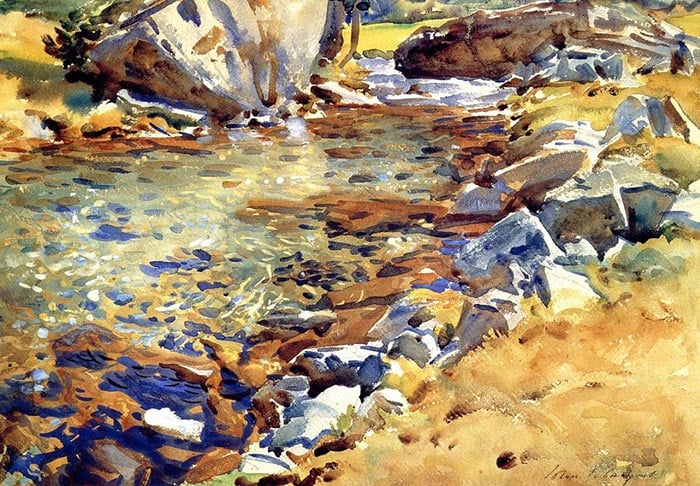
Here is a beautiful interplay between transparent blues and rich oranges.

In Sicily, Sargent layered thin washes of color to depict the sweeping landscape, with dark accents of blue, green, and brown scattered throughout. Notice the gradual change in color temperature as it gets further into the distance. This gives a sense of atmospheric perspective.
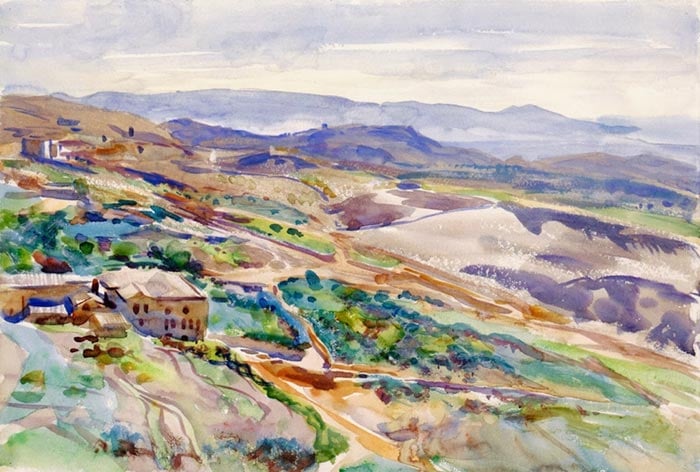
Below are some basic studies in watercolor by Sargent. He was able to simplify the cows down to nothing but a few simple color shapes. This is what painting is all about: taking what is in front of us and simplifying it down to the pure essence. It is about seeing less, not more.

Key Takeaways
Here are some of the key takeaways from Sargent’s work:
- Focus on painting with accurate and distinct values. This goes a long way in giving your work a sense of realism, without having to render every single detail.
- Consider if you are taking advantage of hard, soft, and lost edges. Hard edges will command attention, whilst soft edges appear vague and out of focus.
- “The thicker your paint, the more it flows”. Paint with a loaded brush and make decisive strokes.
- Drawing is the foundation of painting. Sketch regularly to keep your skills honed and “curiosity fresh”.
- Do not limit yourself to just one subject. Sargent painted everything from meticulous portraits to sweeping landscapes. Different subjects will teach you about different aspects of painting.
- Experiment with different mediums. Sargent was prolific in both oil and watercolor painting, along with all the drawing he did.

Want to Learn More?
You might be interested in my Painting Academy course. I’ll walk you through the time-tested fundamentals of painting. It’s perfect for absolute beginner to intermediate painters.
Thanks for Reading!
I appreciate you taking the time to read this post and I hope you found it helpful. Feel free to share it with friends.
Happy painting!
Dan Scott

Draw Paint Academy

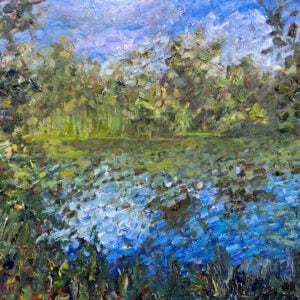
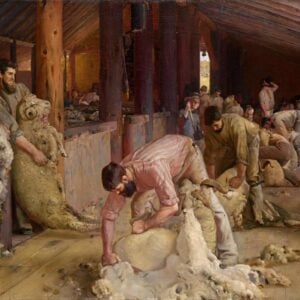
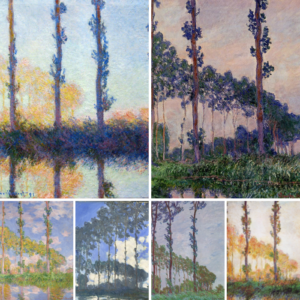
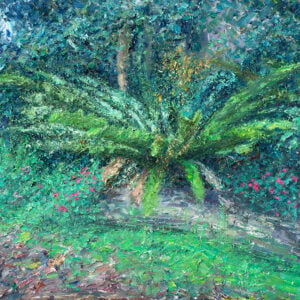
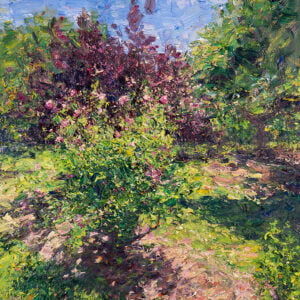
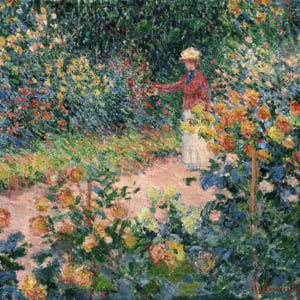
Dan
A very captivating exploration of this topic. Each demonstration was clear and gave encouragement to apply your approaches to my canvases. As always TIME will help improve any attempt…if one thing this craft demands its PATIENCE with SELF and the brush.
thank you for showing me these wonderful & inspiring works of John Singer Sergent – introducing us to a whple new style / colours and composition – & esp. the animal sketches. – of which I knew little before. A. de Rohan.
Thank you so much. I have learned more in a few of your lessons than in all my time of experimenting! These J Singer Sargent expositions are a wonderful education in art.
Thank you for taking the time to put together these wonderful insightful thoughts Enjoyed it so much suzanne
Fantastic article. Having copied a few of JSS master works, your article was so informative that helped me appreciate his talent in all mediums. Thank you.
Thanks so much for writing about John Singer Sargent. He’s one of my favorites!
Very interesting! Thank you, Dan.
Thank you so much, Dan! What a great post. I greatly admire John Singer Sargent and really enjoyed this, very helpful.
Your lessons are always very meaningful to me. Thank you, Dan.
Beyond words to express!
Both the display and gratitude to you Mr Scot for sharing.
Another great post, thank you. I love Sargent!
Thank you for sharing your indepth analysis of Sargent’s paintings. It’s greatly appreciated!
I feel clicks in my heart watching these paintings. He must have been so talented and courageous. Thank you for showing us his works and giving us the tips.
A good overview of JSS painting style, which I will keep in mind for my next painting. One can never stop learning. Thanks for the concise manner in which you present your information c/w photos (very helpful) and for me is better slogging thru a thick book.
PS He is my favorite painter and now that I have gone thru your information, I better understsnd why.
This was a wonderful article. Very helpful information. I’m so inspired! Thank you!
Thank you for sharing. I learnt a lot from the article .
I love your articles! You explain points that a lot of artists do not mention. Very valuable information.
Thank you!
Thank you Dan!
Wonderful article and so educational! I am learning more and more reading each one of your posts! It is amazing how the great masters could put it all together with control. I need to try few of this tips. Thanks again for your teaching Dan!
Thank you for sharing your knowledge. They are always instructive and give me a new perspective that I can apply to my artwork.
This was a fabulous lesson I will read many times. Thank you for continuing to open my eyes and mind — Sargent was a brilliant artist and I could study these paintings for hours. With much gratitude for this post…
Dan Scott, This is a very informative article. It reminds me to take in account the “Big Picture” when painting and step back frequently. As a self taught learner in progress, I often get too caught up in minor details. Your description and examples of having an accurate color story was especially helpful along with beginning with middle values. Thank you!
Thank you. So much beauty to reach for!
I love how you clearly explain the artist’s techniques, replete with excellent examples.
I found myself looking more intently at the paintings and hopefully transferring some ideas to my own.
Thanks Dan, a great post!!
Love your article, I enjoy how you deliver your knowled about the artist in an interesting and easy way to understand.
Thanks
Lourdes
Great discussion.
Fantastic artist
Thanks!
What a treat to take time to read this and look at the beautiful artwork! Thank you!
Thank you for showcasing an artist who used a variety of mediums and subjects! I especially enjoyed his watercolor paintings. I also appreciated how you trained us how to see the paintings as a artist. I am learning how to see differently and need help knowing what I’m seeing!
Thanks again for focusing on John Singer Sargent. It was a great review of some of his work. Another valuable article.
Enjoyed this entirely! Thank you.
Thanks so much, Dan! I learned a lot with your reviews on the classical artists. Two things I came away with is to try starting with medium values and make the main dark and light values distinct. Also you brought out the importance of developing drawing skills for better compositions/paintings.
~Liz
Enjoyed this post so much! You offer such insight to so many valuable artistic techniques.
Thank you, Dan. Very interesting! I greatly admire John Singer Sargent.
Nice article Dan.
Thanks for sharing your observations, goes to show one is never to old to learn,I have a few miles on the clock and Took a lot from this post.
Keep up the good work.
Dave M (Australia))😎🇦🇺
Wonderful article. Loved the painting
Was JSS accepted in Expressionist Europe, or did his being American handicap him with European critics?
Thanks so much for this! Sargent was certainly the master, and your analysis is very insightful.
Hi Dan,
This is excellent mate.
Even if you are not acclaimed for your own painting (which I don’t think I will be) your very intelligent, insightful articles on famous artists and their works are seriously good – informative, helpful in general terms & with specifics. The wealth of visuals is fantastic. I have used aspects of some of your past “Illustrated Essays” with my students & your one on Homer Winslow was an eye opener (I have to admit I was unaware of him). Do keep up the great work on these as well as with your own painting videos.
Regards
Owen Brown from Oz
It’s easy to draw crisp, but so many times the beauty is in drawing soft !
I really love Sargent Arts works! so thank you for sharing this:)
Thank you, Dan for such an insightful post. I love JSS and was so fortunate to see an exhibit of his work when I was in Venice. His work is magnificent. I especially love the way his paintings come alive with only a few colors. I will try to incorporate some of your suggestions when I paint my next watercolor—tomorrow- Can’t wait!
Again, a neat blog. I love Sargent’s work. The hard and soft edges tip wad very helpful.
I love your articles and find myself immersed in the topics and references to famous artists and their works. Quite frankly, it is like reading a fascinating story and I just can’t put it away until I read to the very end. My compliments to your knowledge, observation and discernment in capturing the elements of the works and the techniques that play such important roles in conveying the artists intention.
Thank you, Dan, very educational and inspiring!
My compliments to your knowledge, observation and discernment in capturing the elements of the works and the techniques that play such important roles in conveying the artists intention. It is wonderful information and I learn so much from you.
Thanks again for a wonderfully thoughtful and instructive article. The research you must put in to each is detailed and enlightening. Keep ‘em coming.
VERY helpful…I need to load my brush..
This is one of the best lessons for me so far….
I sketch alot and wondered if it was helping me without realizing it..guess it surely is! Thank you.
Dan, thank you so much for your excellent article (s) you are always sharing with us.
Very helpful. Looking forward to learn more.
Very comprehensive and apprehensive article on the great painter. Thanks Dan!
Thank you for sharing all you do. This article of Sargent is great, so much to learn.
Dear Mr. Scott,
thank you so much for a lovely presentation on a work of the great artist. I am not a painter. My husband and I, however, appreciate the art of many kinds. We are looking for seeing more in a picture all the time. The more we learn the better we see and enjoy the art. Thus I do not understand: “see less, not more!”? Does this concern painters only, but not viewers? Thank You!
Hi Jana. Thanks for the comment. That phrase is more for artists: our job is to take the complex surroundings and turn it into something more concise and clear. Thanks! Dan
very significant article with great examples. so much learning! your observations are enlightening.
Tremendously helpful and avoids the constant scolding of many other art guides. Thank you.
Hello,
I paint like JSS.
Please contact me and do an article on me as soon as you can. It will be very interesting.
My studio is in Naples Florida.
Oil and mixed medium Painter for 60 years.
Regis Bobitski.
rwbmycooart@gmail.com
Mobil 239 292 8187